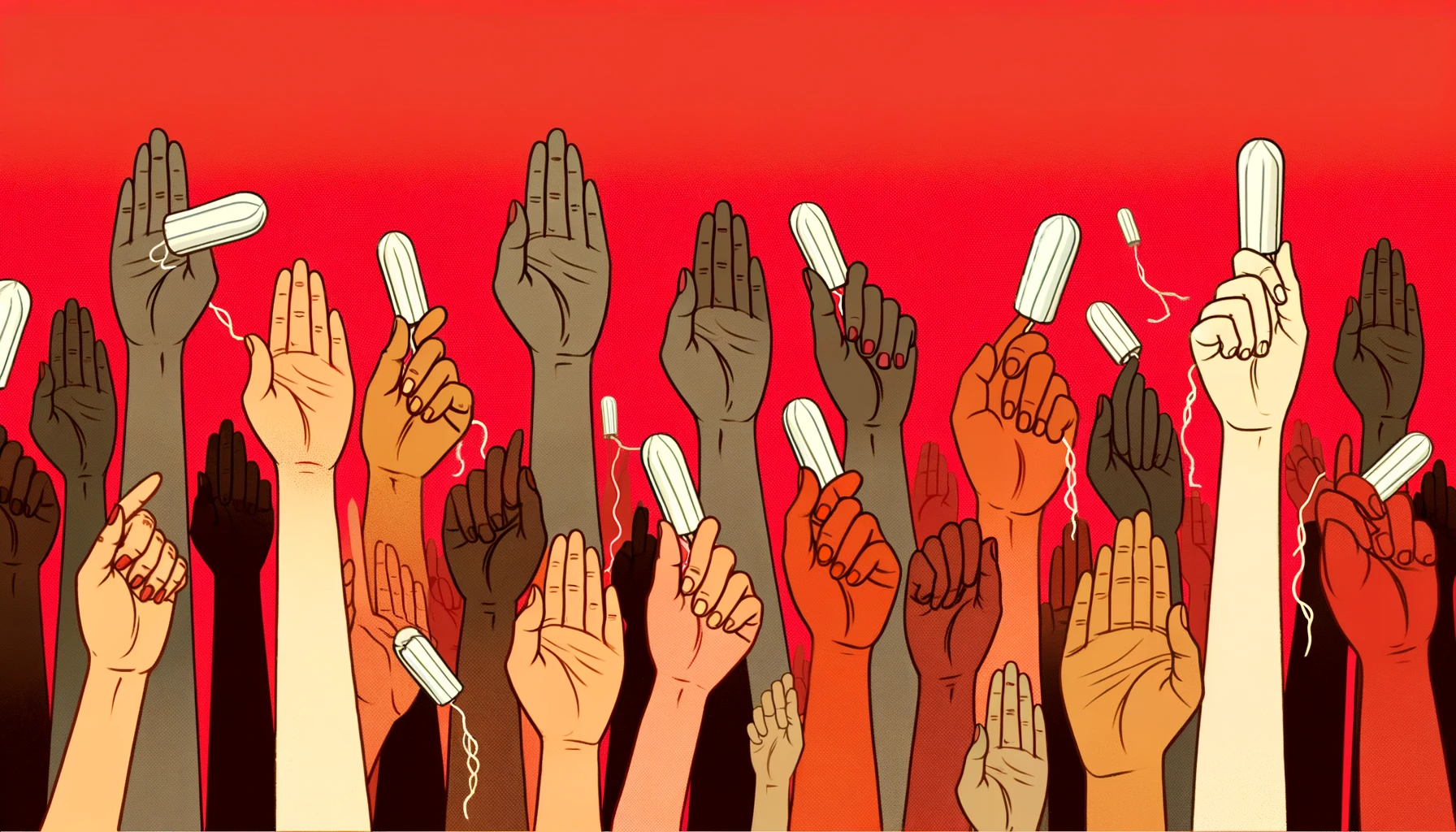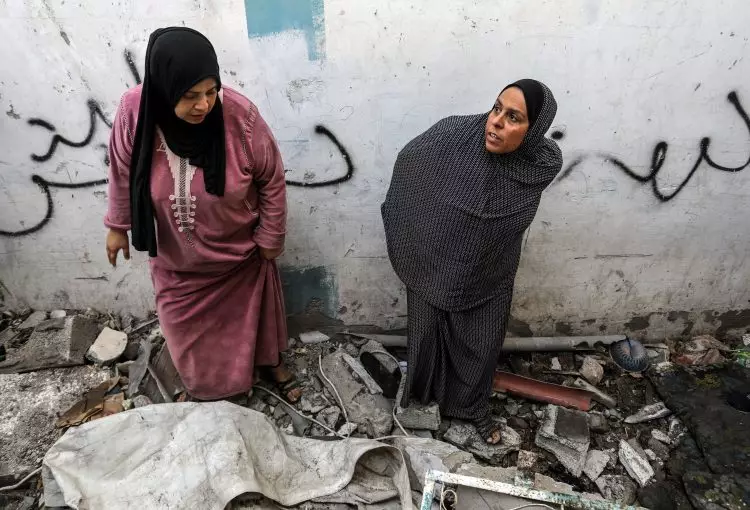
The Invisible Burden: Shining a Light on Women’s Underserved Health Issues Worldwide
In a world that prides itself on advancements in healthcare and gender equality, it’s disheartening to acknowledge the stark reality that countless women and girls still face significant health disparities, often left unacknowledged and unaddressed.
Among these, period poverty stands out as a poignant example of how societal neglect and economic barriers can turn a natural biological process into a debilitating hurdle.
Within the broader issue of women’s health disparities, period poverty serves as a lens to examine the global challenges that women and girls face, particularly in war-torn areas, as well as the innovative solutions being proposed to mitigate these crises.
The Global Challenge of Period Poverty
Period poverty refers to the struggle many women and girls face in accessing sanitary products; safe, hygienic spaces in which to use them; and the right to manage menstruation without shame or stigma. It’s a multifaceted issue that encompasses affordability, access, and education. The consequences of period poverty extend beyond just physical health, impacting education, work, socialization, and mental health, due to the stigma and shame associated with menstruation.
Globally, period poverty is a glaring example of gender-related health inequity. However, in regions plagued by war, conflict, economic instability, and/or cultural taboos, the severity of impact is even more profound. Gaza, Haiti, and Ukraine vividly illustrate the challenges faced by women and girls in such contexts.
The Plight of Women and Girls in Areas of Conflict
Gaza

In Gaza, the blockade and recurring conflicts have devastated the economy, healthcare, and education systems | Palestinians inspect a house after an Israeli air strike, in the city of Rafah in the southern Gaza Strip, on February 25, 2024 | Photo from Shutterstock
In Gaza, the blockade and recurring conflicts have devastated the economy, healthcare, and education systems. The repercussions for women and girls are severe, with period poverty being a critical, yet often overlooked, aspect of their struggle. Access to menstrual products is limited not only by affordability but also by availability. Sanitary products are often scarce, and when available, they are prohibitively expensive for many families prioritizing basic survival needs.
The situation is compounded by the lack of proper sanitation facilities. According to UN estimates, there are:
- Nearly 700,000 women and girls in Gaza with menstrual cycles,
- Few opportunities for privacy, or access to clean water or menstrual products, and
- An average of 486 people sharing a single toilet in the shelters provided by the UN Palestinian aid agency (UNRWA).
Cultural stigma surrounding menstruation further exacerbates the issue, limiting education and dialogue on menstrual health and hygiene.
Haiti
Similarly, in Haiti, a country experiencing gang violence, political instability, hunger due to soaring food prices, and scarcity of clean water due to drought, women and girls face daunting obstacles to menstrual health. The turmoil has severely impacted access to healthcare and sanitation, making period poverty a pressing issue.
Two-thirds of those living in Haiti live in rural areas, and nearly 15,000 people have been displaced since armed insurgents attacked the capital, Port-au-Prince, in late February. Widespread violence, destruction, and looting are ongoing.
The scarcity of resources and the disruption of supply chains exacerbate the difficulty in obtaining menstrual products and maintaining personal hygiene and safety, while cultural taboos and lack of education regarding menstrual and reproductive health further marginalize women and girls who are already vulnerable to rape and kidnapping while traveling on roads controlled by the armed gangs.
Ukraine
As in Gaza and Haiti, the ongoing violence and destruction in Ukraine has not only caused immense physical and emotional distress but has also significantly impacted the daily lives of women and girls.
Of the 8 million Ukrainian refugees, 7.2 million are women, meaning that 90% of displaced people from Ukraine are potentially experiencing menstruation while lacking access to sanitary period products.
Women’s sexual, reproductive, and emotional health is further compromised and attacked by the war’s increased risks and occurrences of gender-based, conflict-related sexual violence, intimate partner violence, and human trafficking. Approximately 14.6 million people are predicted to need humanitarian assistance throughout 2024. About 56% of those are women and girls.
Challenges Across Geographical Divides
Across geographical areas, war and other forms of violent conflict result in this largely invisible health and humanitarian crisis.
- Displacement and instability, with millions of women and girls finding refuge in shelters or temporary accommodations that lack privacy and adequate sanitation.
- Economic hardship, with many families struggling to afford basic necessities. Menstrual products, often considered non-essential, become a secondary priority, pushing period poverty to critical levels.
- Access to safe and sanitary menstrual products, given the disruption of supply chains and the destruction of infrastructure. In some areas, these products are scarce or entirely unavailable.
Toward Solutions and Solidarity
Aside from achieving an end to the violent conflicts, addressing period poverty and the broader health disparities women face requires a multifaceted approach. In Gaza, Haiti, Ukraine, and beyond, there is an immediate need for:
- Improving access to menstrual products,
- Education on menstrual health, and
- The necessary infrastructure for proper menstrual hygiene management.
International aid and local initiatives play a crucial role, but there is also a need for global awareness and advocacy to break down the stigma and barriers surrounding women’s health, especially women’s menstrual health.
Humanitarian and menstrual rights organizations like Plan International, Hey Girls, Don’t Cramp My Style, Freedom4Girls, Anera, the United Nations Population Fund, and I Support the Girls are just a few advocacy groups who are rallying to provide reproductive and menstrual health and safety supplies to women and girls in these and other countries that are in crisis.
Supporting these and other initiatives, whether through donations, volunteering, and/or advocacy, is crucial.
Internationally, individuals, communities, and organizations are collaborating to address period poverty overall, in both peace and war, with innovative solutions, including:
- Reusable menstrual products. Initiatives in both Gaza and Haiti have begun to promote the use of reusable menstrual products, such as cloth pads and menstrual cups. These solutions not only provide a sustainable alternative to disposable products but also ensure long-term cost-effectiveness and environmental benefits.
- Local production of menstrual products. To tackle the issues of availability and affordability, some NGOs have started programs for the local production of sanitary pads. In Haiti, projects like this empower women by providing them with employment opportunities while addressing the menstrual product scarcity.
- Education and awareness campaigns. Breaking the silence around menstruation is critical. Organizations worldwide are conducting workshops and awareness campaigns to educate girls, boys, women, and men about menstrual health and hygiene. These efforts aim to destigmatize menstruation and promote gender equality.
- Policy and advocacy work. Advocacy groups are pushing for policy changes to make menstrual products more accessible and affordable. Efforts include lobbying for the removal of taxes on these products, advocating for free distribution in schools and communities, and including menstrual health in sexual education curricula.
- Partnerships for distribution. Collaborations between NGOs, governments, and private sectors have led to the distribution of menstrual products to those in need. In war-torn areas, emergency relief efforts now increasingly include menstrual products as part of their basic aid packages.
The fight against period poverty is a testament to human ingenuity and compassion, showcasing how collective action can tackle deeply entrenched societal issues. Through a combination of advocacy and direct action, we can ensure that period poverty is not an insurmountable barrier but a challenge that can be overcome.

